This post may contain affiliate links. Please read our disclosure policy.
Caldo verde is a traditional Portuguese soup made with a broth of puréed potatoes and garlic, then garnished with chouriço and thin ribbons of collard greens. My grandma’s caldo verde recipe is simple, but packed full of flavor and comfort.
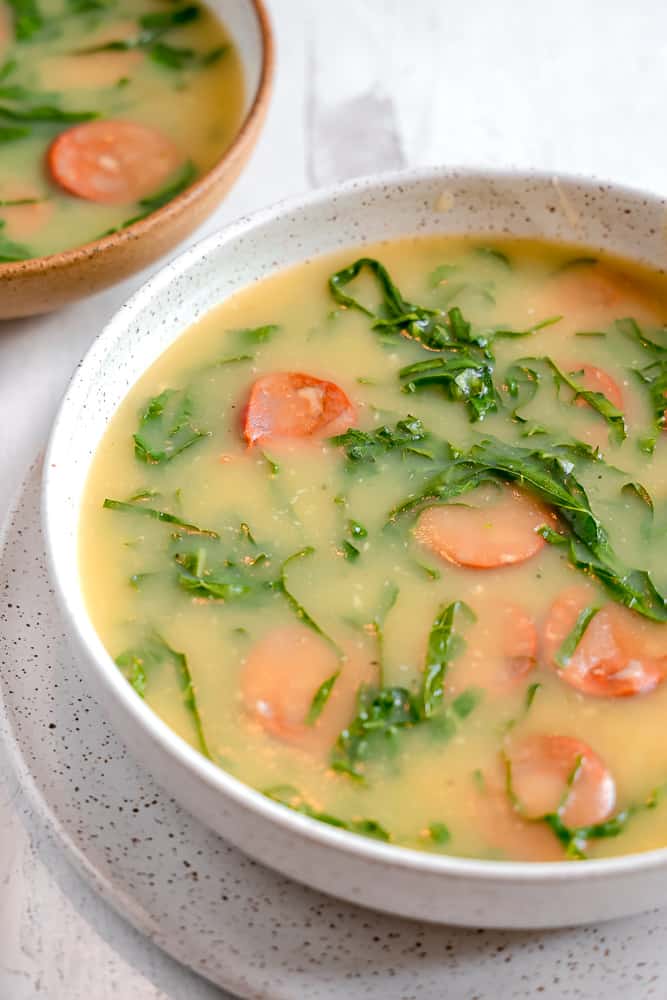
Being Portuguese, caldo verde basically runs through my veins and the most made soup in my family. I’ve always gotten to enjoy this soup when my grandma and grandpa made it for me hundreds of time, but once they passed, I had to keep the tradition going.
Potatoes
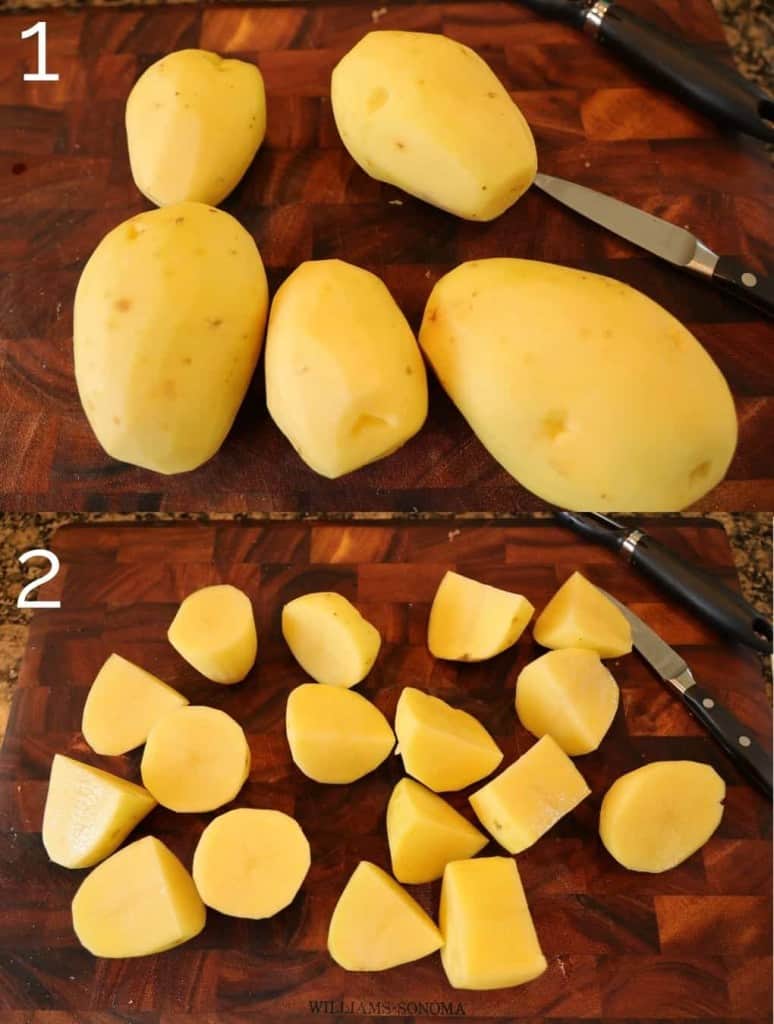
Email this Recipe!
Email this recipe to yourself to save for later.
By submitting this form, you agree to receive emails from Girl with the Iron Cast.
The base of caldo verde is potatoes, I always use gold potatoes because they will give you that creamy silky texture. Peel the potatoes and quarter. You can also leave them whole, but they cook faster cut. The only other base ingredient I use is garlic. My grandma never used onion or any other seasoning besides salt and pepper.
Liquid ratio
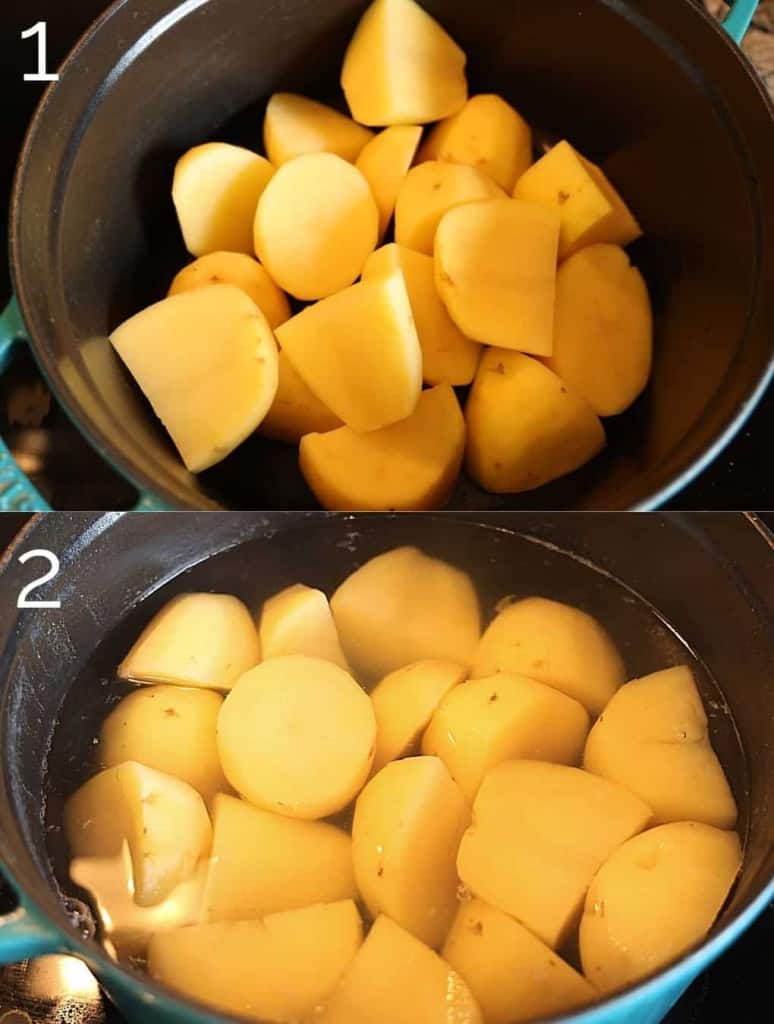
The most important step when making traditional caldo verde soup, is the liquid-to-potato ratio. If you add too much water, when you purée the soup it will be too watery. You can always add water, but you cannot take it away. I arrange the potatoes in the pot so there aren’t many open spaces, then fill the water just enough to cover the potatoes. Add the garlic and allow to boil until the potatoes are soft.
Chouriço
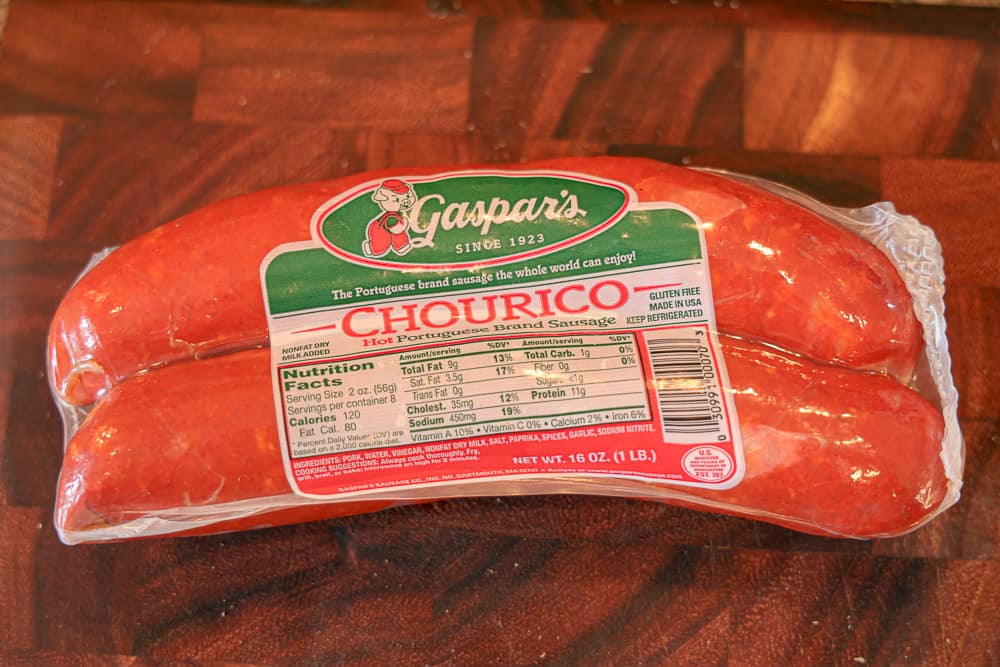
Is Portuguese chouriço and Spanish chorizo the same? They both are pork sausages, but seasoning blend is different. Spanish chorizo is heavily paprika based. While Portuguese chouriço also has paprika, it has much less and is heavier on the garlic and black pepper. Portuguese chouriço also has red wine infused in it and is smoked, so you can eat it right out of the packaging. Spanish chorizo is par-cooked, so you always need to finish the cooking process prior to consuming it.
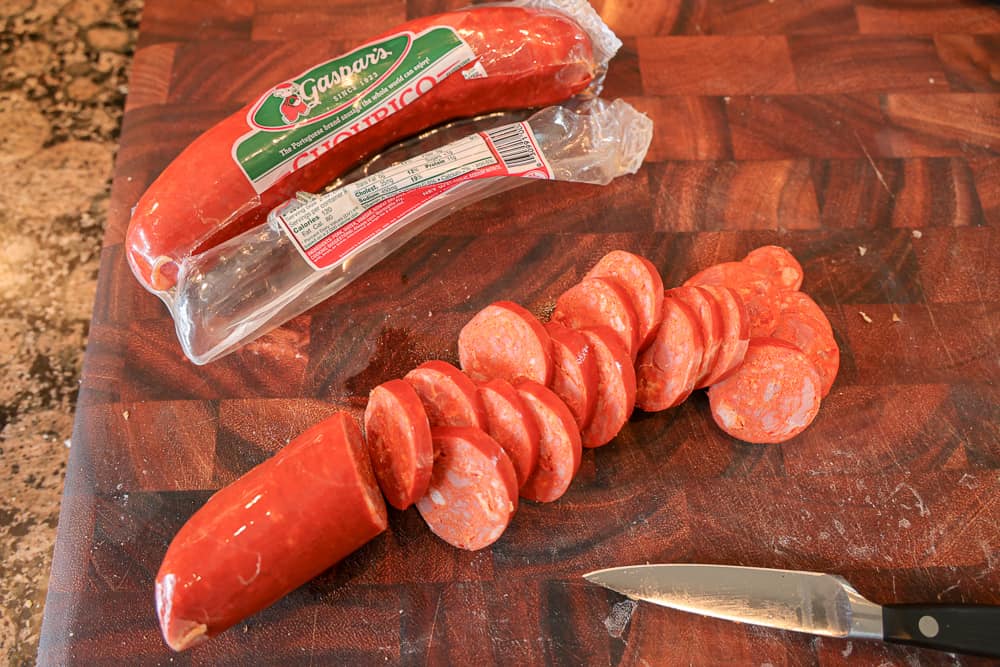
You may also see linguiça at the grocery store. Linguiça is basically chouriço’s sibling that is smaller and more mild. If I am in a pinch and don’t have any chouriço, I have used linguiça in this recipe before. The chouriço really packs that super flavorful punch in the caldo verde, so try not to substitute.
Collard greens (couve)
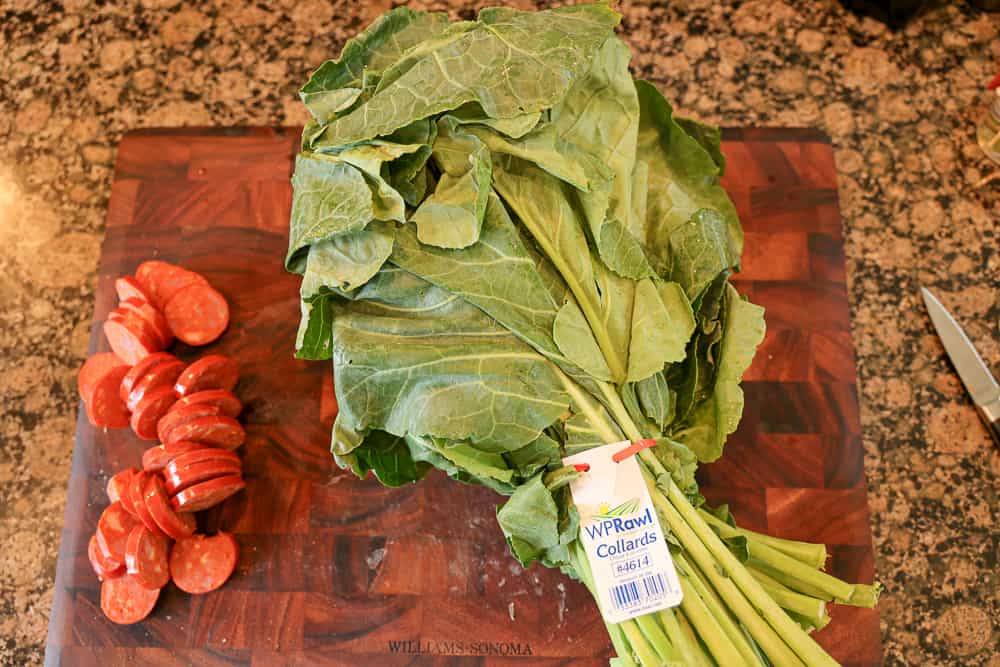
A controversial ingredient in traditional caldo verde is the leafy green used. For my 30 years being alive I have always eaten caldo verde with collard greens, couve in Portuguese, and my entire lineage cooked it that way for a century. You will see a lot of people use kale, who have also been cooking caldo verde for over a century, but I am keeping it true to my grandma’s recipe. Always couve.
Cutting the greens
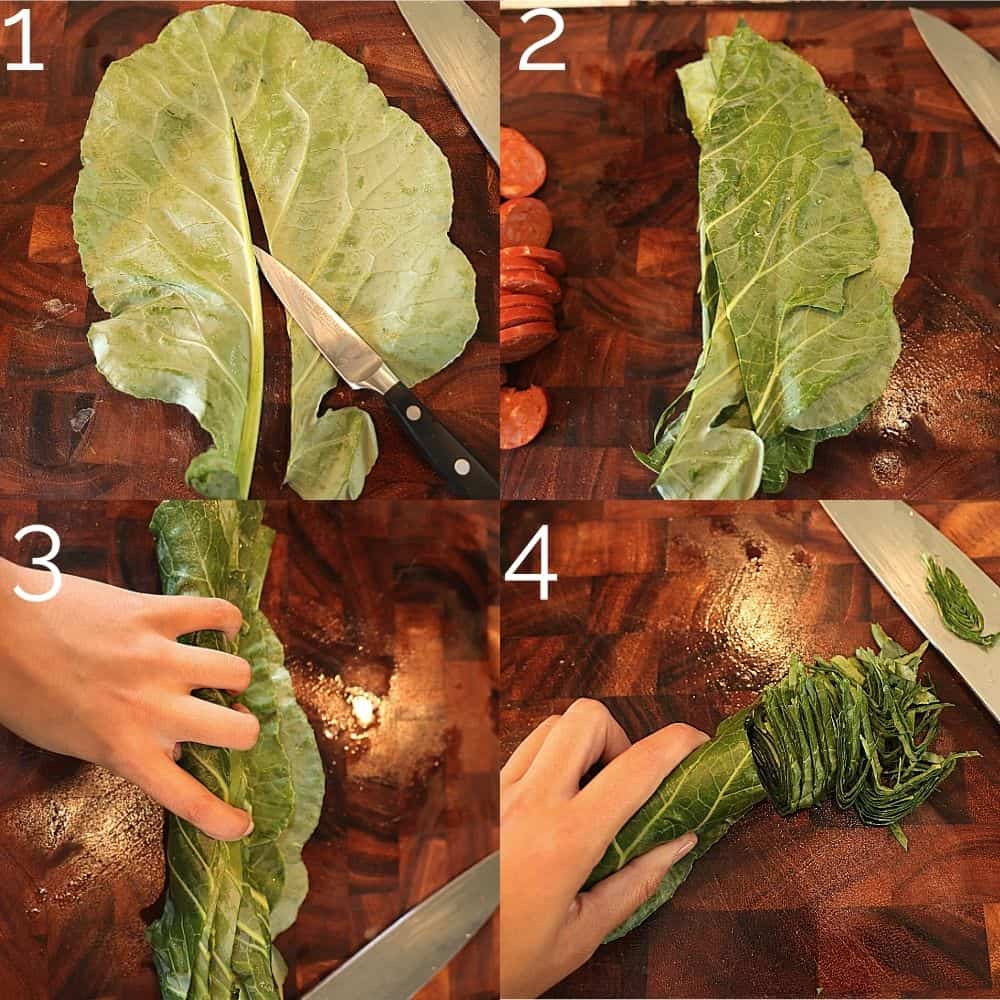
Whether collard greens or kale, you still prep and cut the leafy greens the same way:
- Cut the thick stem out of the center of the collard greens and continue the cut so the leaf is in half.
- Stack all the halves on top of each other
- Tightly roll the leaves
- Slice thin strips which will give you long ribbons
Puréeing potatoes
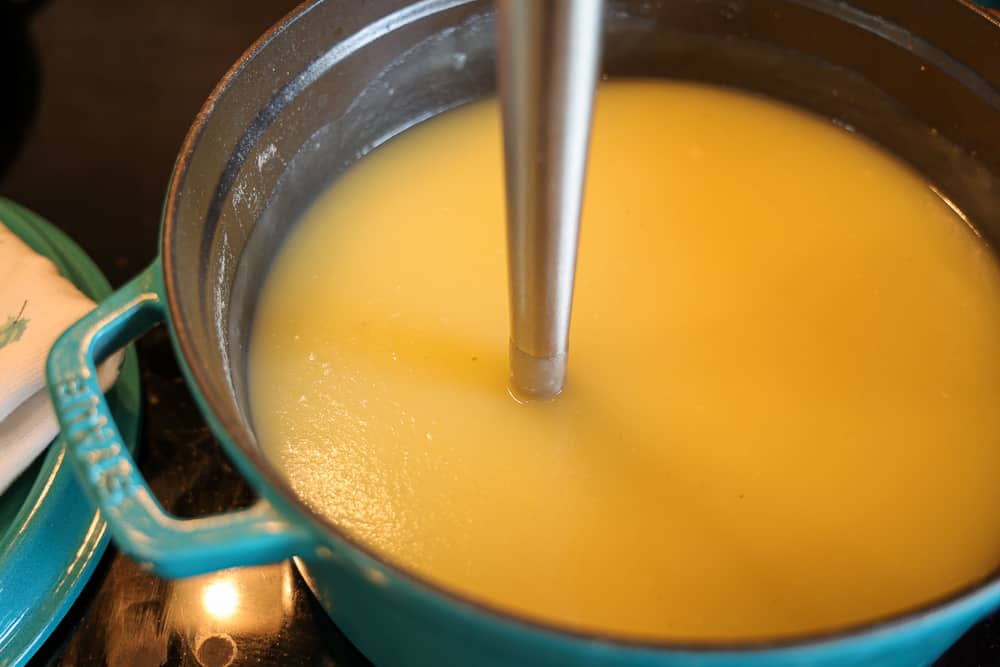
Once the potatoes are easily pierced with a knife, it’s time to purée them. Using an immersion blender, blend until the potatoes are fully smooth. Now is when you assess the consistency and see if you need more water. This is supposed to be a thick soup base, not watery/brothy. Bring to a gentle boil.
Chouriço and couve
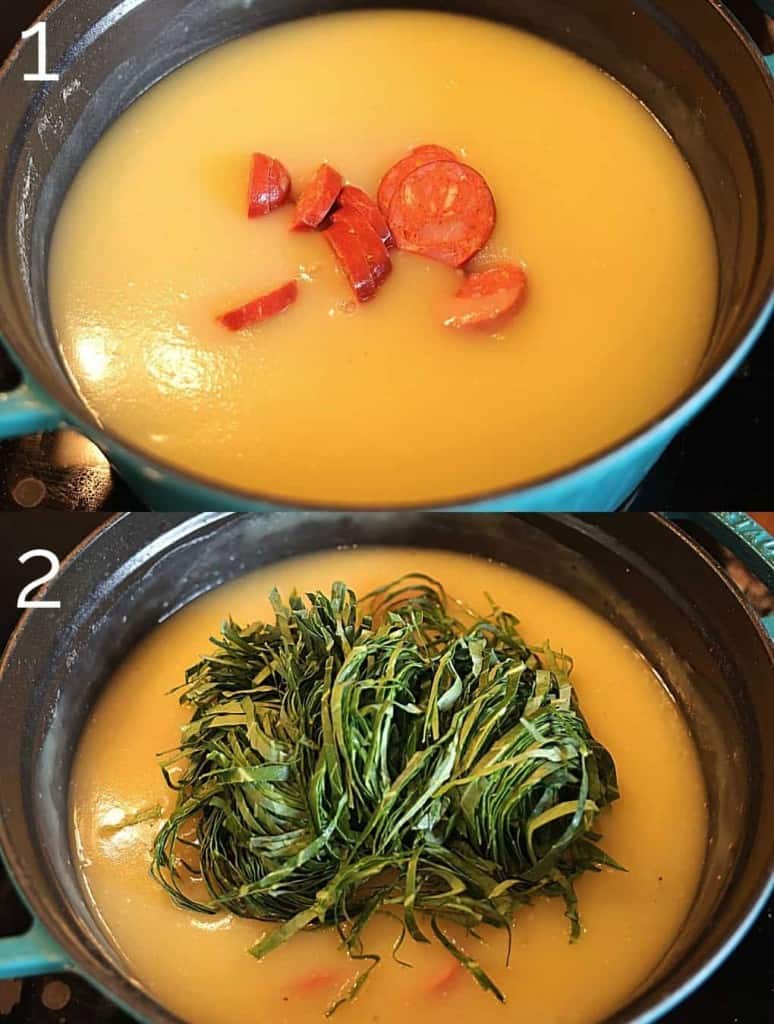
Next you are going to add in the chouriço and collard greens. The chouriço is fully cooked, so now it is just going to help flavor the rest of the broth. The collard greens also need to soften for ten minutes.
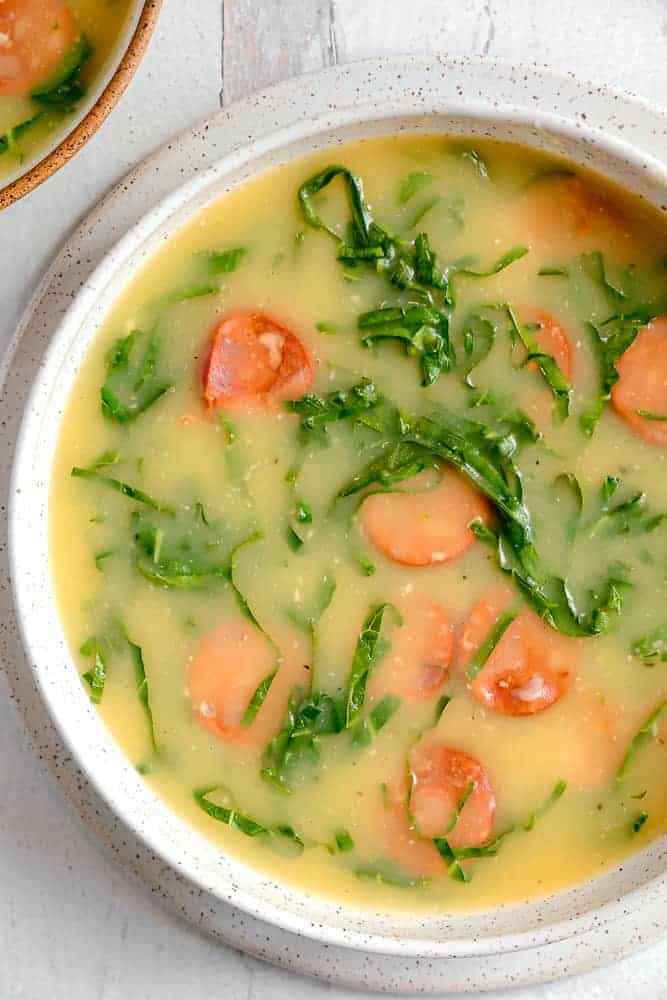
I wait till the very end of cooking caldo verde to adjust the seasoning with kosher salt and black pepper, because the chouriço will lend a lot of it’s seasoning to the soup.
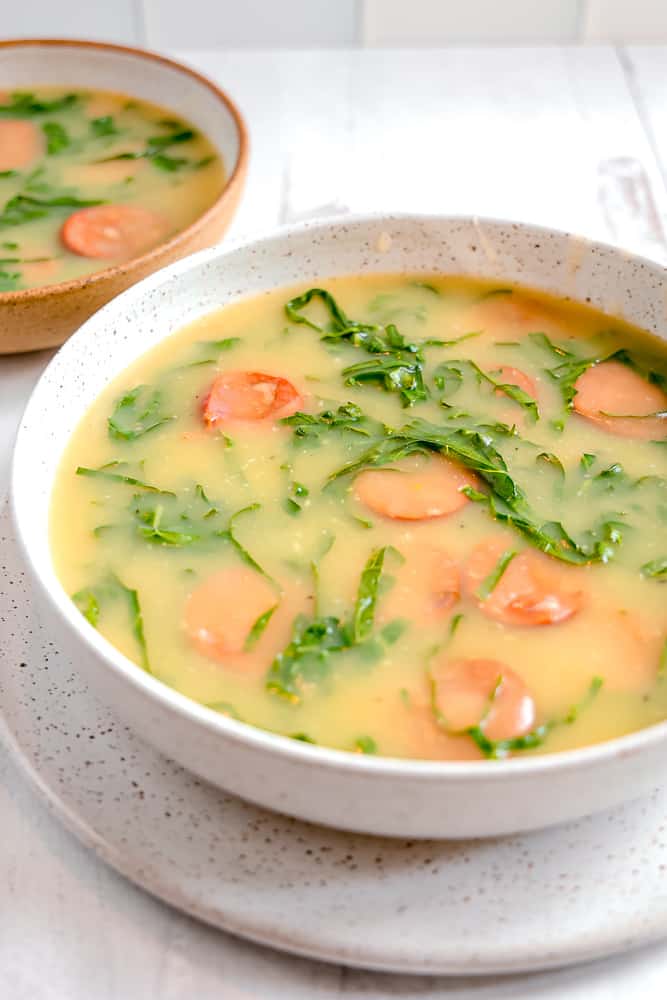
This caldo verde is so delicious, comforting, and a hearty soup. It is even more flavorful the next day. Store in an airtight container for up to 4 days (if it lasts that long).

My grandma’s caldo verde soup recipe means so much to me and I am so happy to share it with you all. I hope you enjoy it as much as I do. Another wonderful recipe of my grandma’s is her potato soufflé, a must make too!
Made this recipe and loved it? Leave a star rating below!
Did you make this? If you snap a photo, please be sure tag me on Instagram at @girlwiththeironcast or hashtag #girlwiththeironcast so I can see your creations!
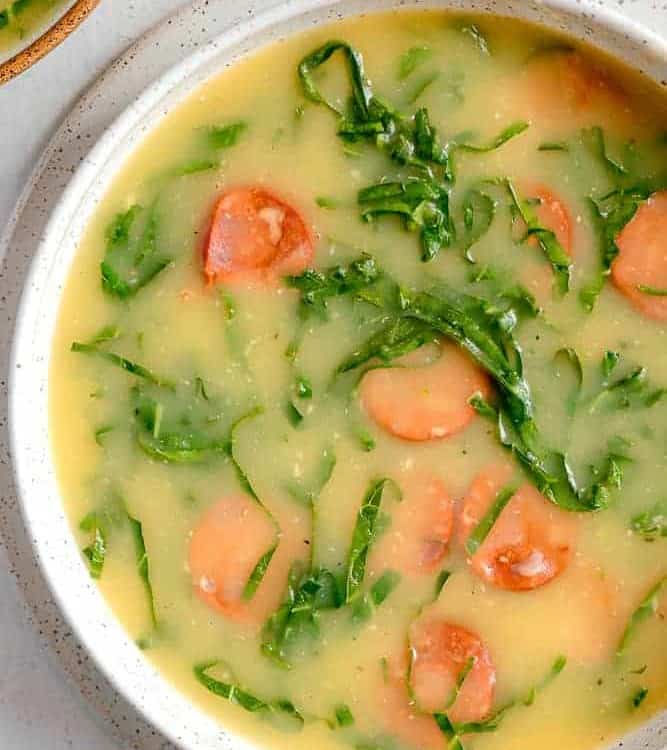
Caldo Verde
Ingredients
- 3 pounds yukon gold potatoes (peeled and quartered)
- 3 cloves garlic (peeled and roughly chopped)
- Water
- 1 pound Portuguese Chouriço (sliced [see note #1])
- 10 large collard green leaves (prep in recipe)
- Kosher salt
- Fresh ground black pepper
Email this Recipe!
Email this recipe to yourself to save for later.
By submitting this form, you agree to receive emails from Girl with the Iron Cast.
Before You Begin! If you make this, please leave a review and rating letting us know how you liked this recipe! This helps our business thrive & continue providing free recipes.
Instructions
- In a soup pot, place the quartered potatoes as evenly as possible on the bottom of the pot and the garlic. Add enough water to just cover the potatoes. You can always add more water later on in the recipe, but cannot take away and it will affect the texture of the soup. Add in 1/2 tsp of kosher salt.
- Bring the potatoes to a boil and allow them to cook until easily pierced with a knife (about 10-15 minutes).
- While the potatoes boil, cut the chouriço and cut the collard greens. Cut the thick stem out of the center of the collard greens and continue the cut so the leaf is in half. Stack all the halves together, then begin to tightly roll the leaves. Cut thin strips which will give you ribbons.
- Once the potatoes are easily pierced with a knife, using an immersion blender, blend until the potatoes are fully smooth. Now is when you assess the consistency and see if you need more water. This is supposed to be more of a thick soup base, not watery. Bring to a gentle boil. .
- Next you are going to add in the chouriço and collard greens, stir to combine into the soup. The chouriço is fully cooked, so now it is just going to help flavor the rest of the broth. The collard greens will soften for 10 minutes.
- I wait till the very end of cooking caldo verde to adjust the seasoning with kosher salt and black pepper, because the chouriço will lend a lot of it’s seasoning to the soup. Adjust seasoning if necessary and serve using a ladle.
Notes
- Portuguese chouriço is not the same as Spanish chorizo. If you can not find Portuguese chouriço, try and substitute Portuguese linguiça. If you can not find either and must use Spanish chorizo, you must fully cook it separately, since it is par-cooked. See in recipe post more notes on differences between chouriço and chorizo.
- Store in an airtight container in the refrigerator for up to 4 days.





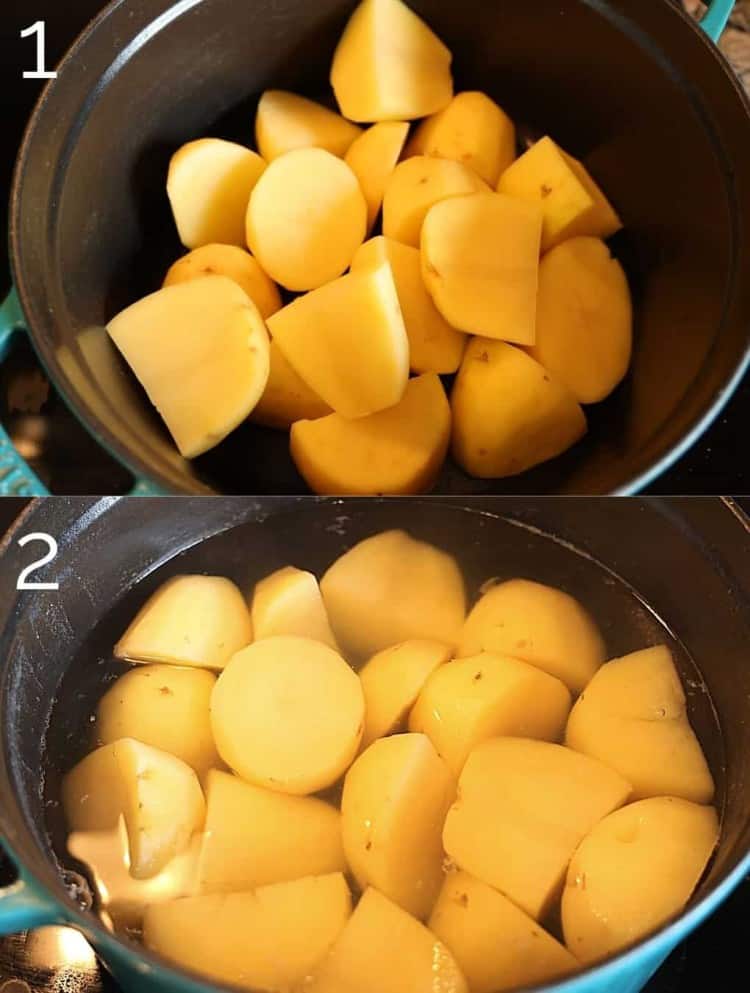
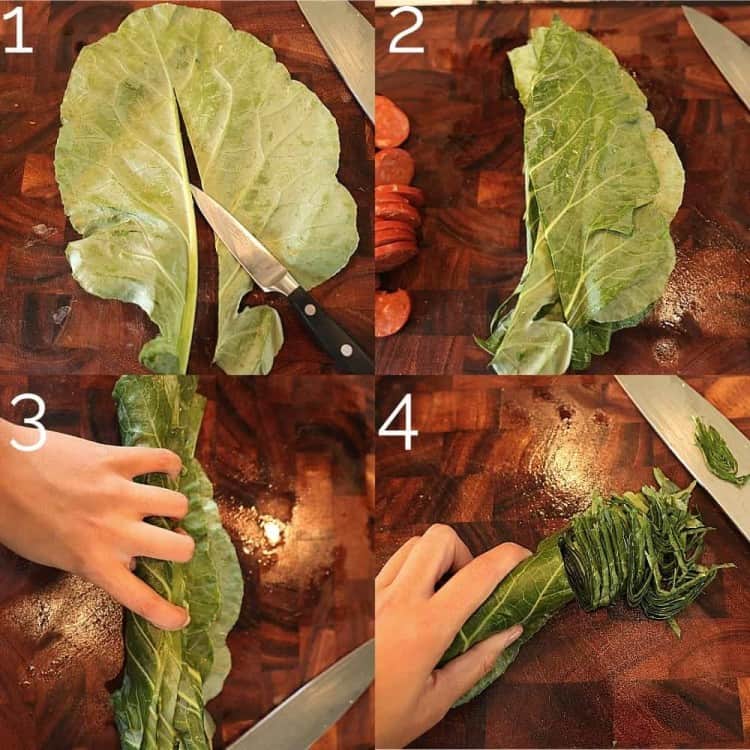
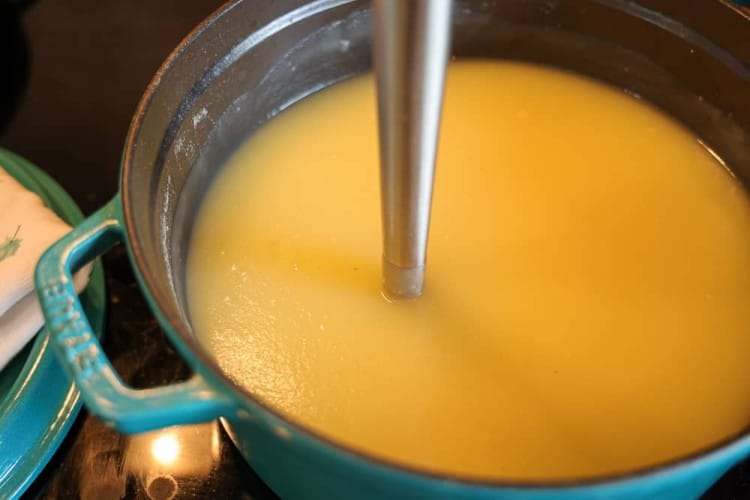
Making now – assuming the garlic goes in with the potatoes? Did I miss that in the recipe?
Hi Burke! Yes it’s in step 1, it goes in with the potatoes 🙂
Delicious !
Our new favourite soup ….